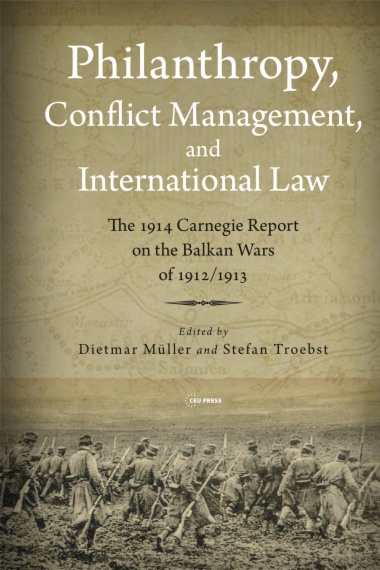This book centers on the Report of the International Commission to Inquire into the Causes and Conduct of the Balkan Wars, published in Washington in the early summer of 1914 by the Carnegie Endowment for International Peace. The volume was born from the conviction that the full assessment of the significance of the Carnegie Report—one of the first international non-governmental fact-finding missions with the intention to promote peace—requires a deeper exploration of the context of its birth.
The authors examine how the countries involved in the wars handled the inquires of the Carnegie Commission and the role of the report in the remembrance of the wars in the respective states. Although the report considered both the Ottoman Empire and the Balkan nation-states insufficiently civilized to wage wars within the limits of the codes of conduct of international law, this orientalist conclusion can in part be explained by the liberal internationalist strategy of the Carnegie Endowment, and of the commission members’ professional, political, and ethnic background. Overshadowed by the outbreak of World War I, the Carnegie Report’s direct impact on international arbitration or international criminal law was limited, yet—in the authors’ opinion—it ultimately contributed to the further juridification of international relations
- Cover
- Front matter
- Series title page
- Title page
- Copyright page
- Table of Contents
- List of Acronyms
- Introduction: The Balkan Wars and the Carnegie Report: Historiography and Significance for International Law; An Introduction
- Part One: The Carnegie Endowment for International Peace: Philanthropy and Internationalism in the Twentieth Century
- 1. International Law and Conciliation under Pressure: Political Profiles of the Carnegie Men behind the Balkan Report c. 1910–1919
- 2. “The International Law of the Future”: The Carnegie Endowment and the Sovereign Limits of International Jurisdiction,1910s–1960s
- 3. Shaping International Minds: Education for Peace and International Cooperation after the Great War in the United States
- Part Two: Biographical Approaches: The Commission
- 4. The Balkan Carnegie Commission of 1913: Origins and Features
- 5. Macedonia as a Lifelong Topic: Henry Noël Brailsford
- 6. History and Politics: Macedonia in the Assessment of Pavel N. Milyukov
- Part Three: The Carnegie Commission on the Spot andits Legacies
- 7. The 1913 Carnegie Commission of Inquiry: Background, Fact-Finding, and International Reactions
- 8. Doomed to Fail: The Carnegie Commission in Greece
- 9. The Carnegie Commission Reports and Serbia: Balkan Wars and their Legacies
- 10. The Balkan Wars in Memory: The Carnegie Report and Trotsky’s War Correspondence
- List of Contributors
- Index
- Back cover

